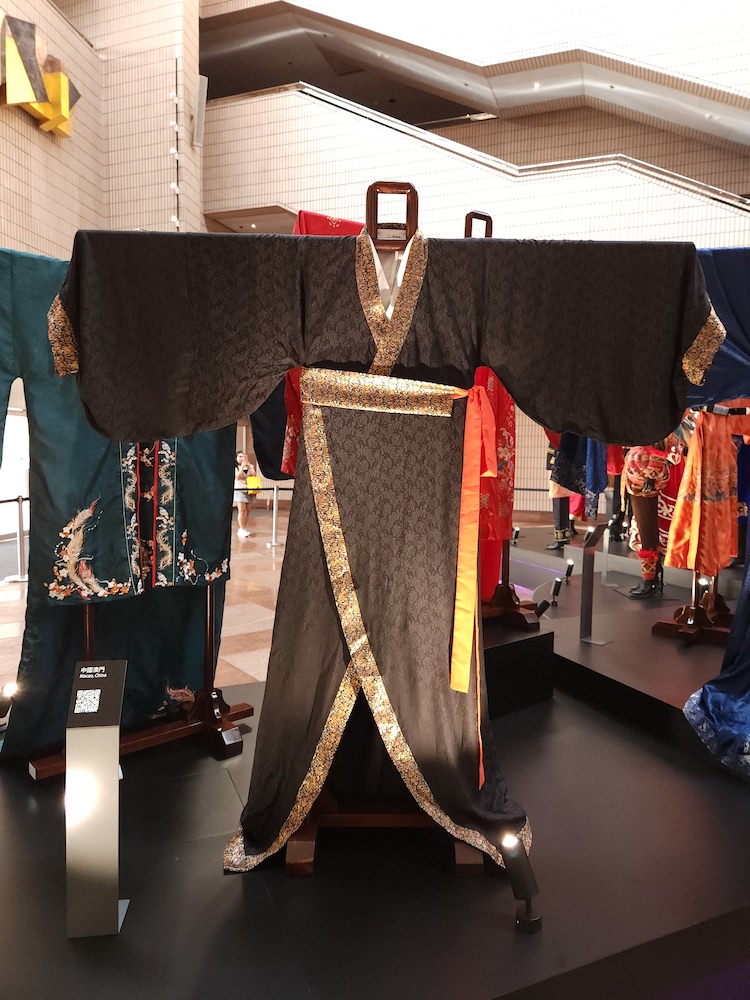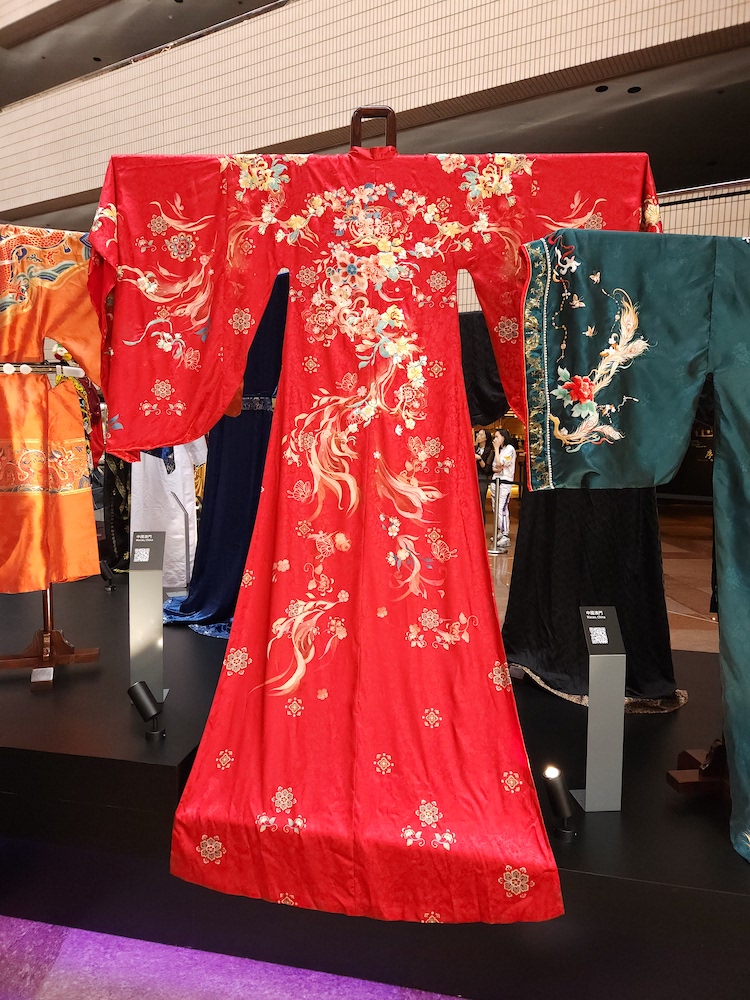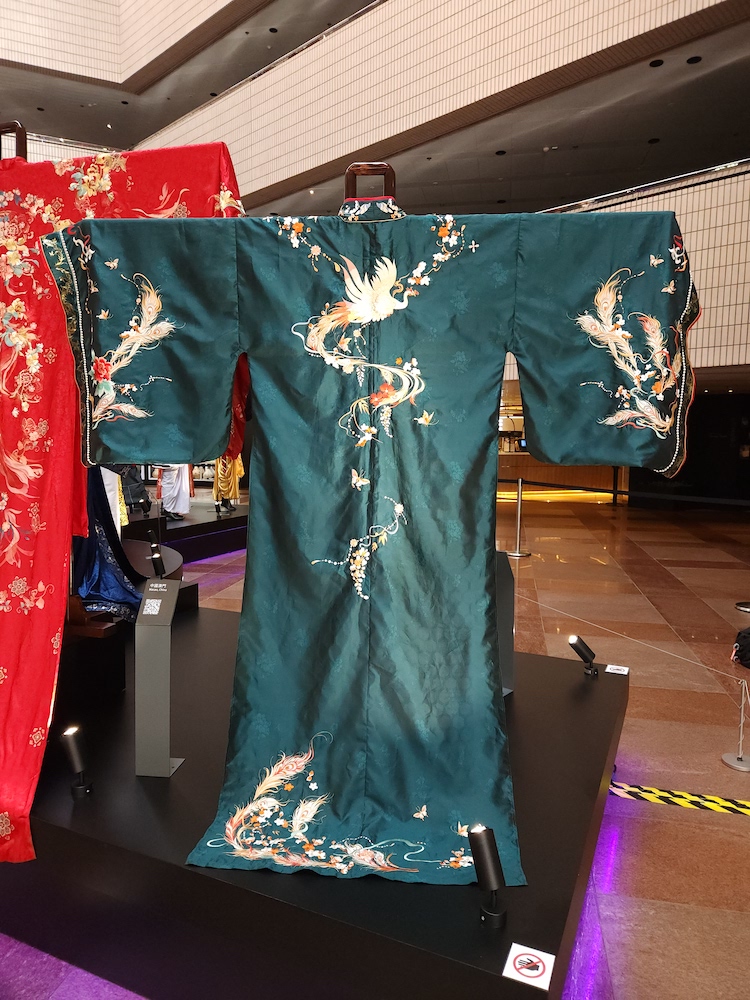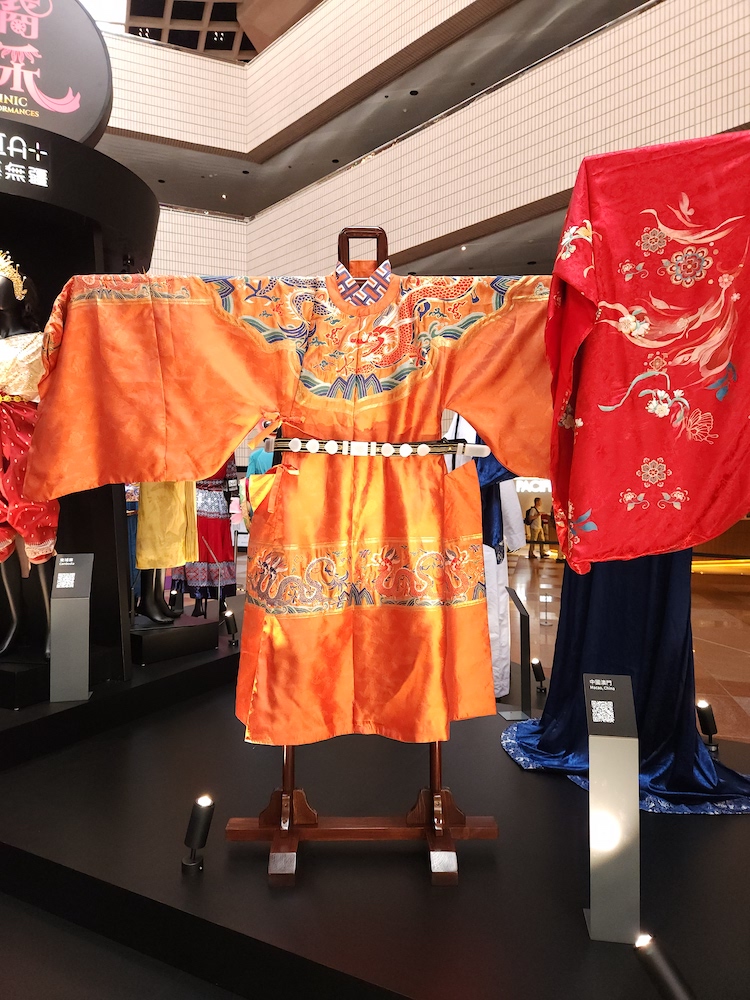Macau Youth International Art and Culture Association

Straight-cut robe from Chu tomb N15 in Ma Shan (Warring States period; 475–221BC)
Ju here refers to the front and rear swathes of a robe. Zhiju, or straight cut, means when the robe is laid flat, the left and right edges of the lower half of the robe are both straight.
This straight-cut robe numbered N15 unearthed from the Chu tomb in Ma Shan, Jiangling City is arguably an outercoat worn by the intelligentsia or people of higher social status. Its body measures 200cm and its sleeves 345cm.

Straight-cut one-piece robe (Western Han; 202BC–8AD)
Shenyi, a style of clothing where the upper garment and lower garment are knitted together into a single piece, signifies a major course in the developmental history of ancient Chinese Han-style clothing. The straight-cut shenyi was an important attire among our forebears in the prehistoric Qin and Han dynasties.
This cross-wrap straight-cut piece discovered at the Han tomb no. 1 in Mawangdui measures 129cm, with sleeves 250cm long. Its left side is wrapped over the right.

Tang-style wide-sleeved attire (Tang dynasty; 618–907)
This piece, with sleeves as long as four feet, became the vogue in the heyday of the Tang dynasty. During the later years of the empire, it became a commodity for the noblewomen in major social occasions. The wearer had to adorn herself with gold or jade hairpins.
In Zhou Fang’s painting Cultured Women Adorned with Hairpins, ladies were seen donning gauze coats and long dresses with these wide sleeves. This fashion style lasted until late Ming. Artefacts were found from both the Song and Ming dynasties.

Song-style wide-sleeved attire (Song dynasty; 960–1279)
At first common among the royal concubines, this wide-sleeved piece was a ceremonial attire for women in significant occasions such as wedding or bestowal of imperial titles.
The wearer of this floor-length, cross-wrap piece was expected to adorn herself with exquisite jewels and makeup.

Ming-style round-collar python robe (Ming dynasty; 1368–1644)
Mangpao, or the python robe, has big swathes in the front (the left side wrapped over the right) and wide sleeves, hanging from the shoulders down to the feet. On its surface are embroidered patterns of the auspicious animal using gold or silver threads or multi-coloured yarn.
In ancient China, being bestowed a mangpao, which signified a top position in the civil service, was the ultimate goal for officials.

